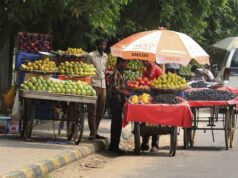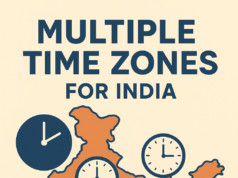Maharashtra is the second-largest producer of sugarcane in the country. The state also has the highest number of sugar mills. Behind this production prowess of the state, the lives of around 1.5 million cane cutters, who are the backbone of the industry, are neglected. These cane cutters are primarily from the drought-prone Marathwada region of the state.
Lack of job opportunities and huge agrarian distress compel them to migrate to Western Maharashtra. The cane cutters are expected to perform a variety of tasks such as harvesting, loading, unloading and transporting sugarcane to the factory as a couple, with both husband and wife working together. Wages are paid as a lump-sum advance, usually, Rs 50,000 to Rs 60,000 per season, which makes the work attractive for labourers over other work available locally.
Nature of Work
Harvesting sugarcane is labour intensive work, workers have to work for almost 12-15 hours a day. Workers are hired through informal, unwritten contracts in pairs of husband and wife. Because of informality they do not get paid leaves. Sugar mills do not take the responsibility of overseeing wage payments, and contractors who make payments do not settle dues fully. They indulge in wage deductions that are not explained.
Hardships Faced by Women Cane-Cutters
Apart from long working hours women have to work additionally for 4-5 hours to do household chores, which takes a heavy toll on their mental and physical health. Fearing wage cuts, women even work during illness and pregnancy. Unavailability of basic amenities like water, toilets, and bathrooms at the workplace adversely affects their reproductive health.
Cane-cutters usually marry early, in some instances they even get married off as children. As work is done in couples, it makes economic sense for parents who earn their livelihoods through cane-cutting to marry their children off to be eligible for gainful employment. Early marriage often leads to early pregnancy, abortions, and a range of reproductive health issues. These challenges are exacerbated by heavy physical labour before, during, and immediately after pregnancy. Deliveries frequently occur at worksites, where proper hygiene and necessary facilities are lacking.
According to the study conducted by the Society for Promoting Participative Ecosystem Management (SOPPECOM), among the 946 women cane-cutters of reproductive age surveyed, 83% reported using cloth during their menstrual periods. Among the pregnant women surveyed, 87% reported being unable to attend medical checkups due to the lack of available leave from work. Furthermore, 43% of these women continued sugarcane cutting until the ninth month of pregnancy, while 35% worked until the seventh or eighth month.
In April 2019, The Hindu Business Line reported on the high prevalence of hysterectomies among sugarcane cutters, beginning with the perplexing question: “Why do many women in Maharashtra’s Beed have no wombs?”. Following which, the State Legislative Assembly convened a discussion that led to the formation of a seven-member committee, chaired by Dr Neelam Gorhe, then Deputy Chairperson of the State Legislative Council. The committee surveyed 82,309 women in Beed district, revealing that 13,861 had undergone hysterectomies in the past decade, predominantly aged 35 to 40 years. The committee identified early marriages, lack of awareness on women’s health issues, poverty, insufficient pre-and-post-operative counselling, water scarcity, and inadequate menstrual hygiene and toilet facilities as key factors contributing to the high rates of hysterectomies.
The lives of the female sugarcane labourers are reminiscent of the famous lines by Faiz Ahmad Faiz, “ek bakhiya udheda, ek siya, yun umr basar kab hoti hai”. Translated loosely to say: Unravelling one stitch and putting in place another, how can life be lived in this manner?
Yet this is how life is lived.
Clearly, the sugarcane is not so sweet for the cane cutters, particularly women.
Post Disclaimer
The opinions expressed in this essay are those of the authors. They do not purport to reflect the opinions or views of CCS.




